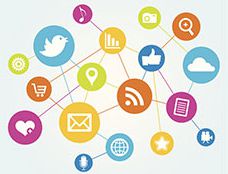Using the Library

This library is designed to serve as a resource that will help your agency provide accurate, consistent, and timely information during a public health emergency.
However, this library is NOT an exhaustive list of all the messages you will need to successfully communicate during a disaster, nor does it account for every at-risk population that may be impacted. Each disaster will provide unique circumstances that require specific, tailored messaging that cannot be predicted in advance. In some cases, the messages in this library will serve as starting points for messages that can be adapted to the specific circumstances of a disaster, its impact on a jurisdiction and the vulnerable populations within it, and the activities of the response agencies that are involved.
Additionally, social media is used most effectively as a two-way communication tool. Listening to your audience and tailoring messages based on what you are hearing is crucial.
The library holds two types of content: hazard-specific messages and population-specific messages.
Hazard specific messages are intended to inform the general public on what measures to take in a specific emergency situation. There are 23 specific hazards, each of which is divided into one of four categories: natural disasters, infectious diseases, accidental disasters, and intentional disasters. Every hazard includes information for all three phases of the disaster (preparedness, response, and recovery). Each phase is further broken down into different message categories such as “emergency kits” and “food safety.”
The hazard specific messages include some messaging for at-risk populations. However, these messages only provide general preparedness tips across all hazards, and are only relevant for seniors, children and infants, and people with special medical needs.
Population specific messages are intended for at-risk populations and their caregivers. Messages are tailored to two different groups, people with physical disabilities and people with communication difficulties. Instead of specific hazards, messages are listed by five basic disaster scenarios: emergency planning, evacuation, shelter in place, power outage, disease outbreak. Messaging predominantly focuses on the preparedness phase.
Things to keep in mind when using the library:
- The messages are organized by the disaster phase for which they are most relevant in order to make it easier to find the content you need.
- Specific messages for certain high risk populations are included. You will find specific categories for content pertaining to children, seniors, and individuals with special medical needs.
- Links to more information are provided for many of the messages. We encourage you to link to more information when possible, either by using these links or replacing them with links to your own agency’s resources in order to best tailor the content to your audience. Please Note: The links provided in the message templates may need to be updated over time. Be sure to test links before using any message templates.
- In addition to actual messages, you will also find directives included throughout the library. Directives are marked by bold font, and serve as reminders to those using the library. For example, we have included reminders to ReTweet relevant messages from partner organizations.
- Some messages include fill-ins (eg. XXX area) so that the content can be tailored to the current situation and to your specific jurisdiction.
- Messages were developed to encourage recent best practices using social media platforms during emergencies (e.g. during Hurricane Sandy, New York City answered questions they received on Twitter during their press conferences). While we highly encourage these practices, make sure that you have the staff to monitor your channels effectively if you use messages that invite questions from your audience.
- The goal was to make the library as thorough as possible, but not all of the messages will be relevant depending on how the actual event plays out. It is up to the public information officer to determine which of the messages to use and in which order to use them.
For Twitter

- The messages include a generic hashtag (#EventHashtag) as a placeholder to serve as a reminder to use a hashtag and to ensure that adding one would not require any additional editing/shortening of the message content.
- All messages are 140 characters or less.
For Facebook

- Many of the Facebook posts include links to more information and/or images. Because Facebook posts that include images are most likely to be viewed, we noted when those links contain images or made a suggestion for the image to include with each message.
- Most of the Facebook messages are 250 characters or less so that the entire message will show up on your Timeline without requiring your audience to click “see more."
For Instagram

- Currently, the library contains limited Instagram content. But, where applicable, we added good examples of images and infographics that agencies have posted during recent disasters.
- We will continue to add content to relevant hazards as we come across new examples.